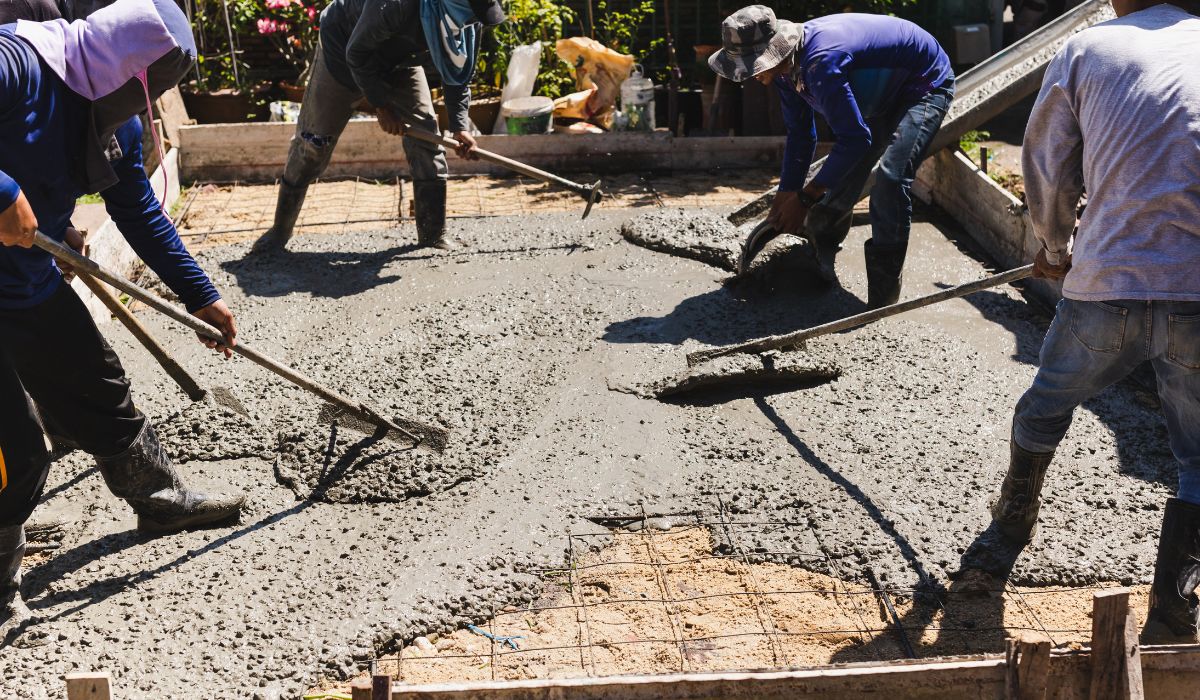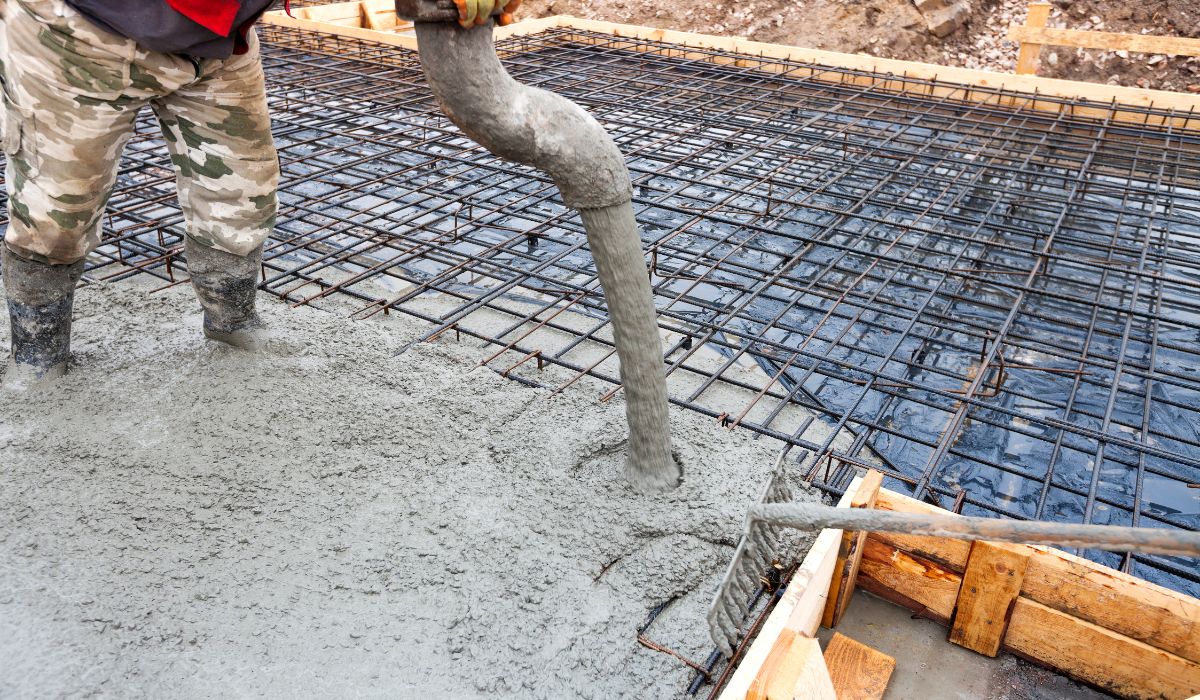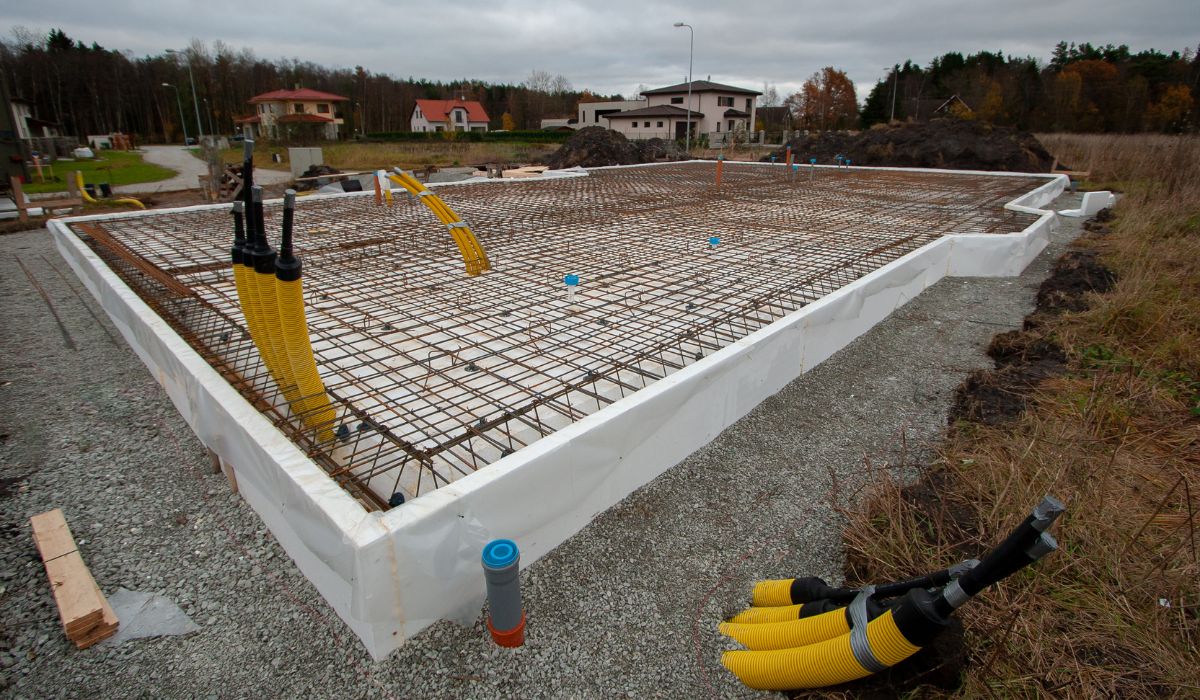Expert Concrete Foundation Services for Homes, Additions, and Commercial Projects
Every lasting building begins with a strong foundation, and at the core of that foundation is a precisely poured concrete base. A properly installed foundation provides the stability your structure needs, prevents settling or cracking, and ensures safety and durability for decades.
At High Desert Builders LLC, we specialize in professional foundation pouring services for residential and commercial projects of all sizes. Whether you’re building a new home, adding a garage, or constructing a commercial facility, our team delivers precision, craftsmanship, and quality you can trust.

Why a Properly Poured Foundation Matters
A foundation does far more than support walls—it anchors your entire structure to the ground. When poured correctly, it provides:
-
Strength & Stability – Evenly distributes weight to prevent cracks, shifting, or settling.
-
Long-Term Durability – Designed to last the lifetime of your home or business.
-
Moisture Resistance – Protects against water infiltration when paired with drainage and waterproofing.
-
Versatility – Suitable for basements, slabs, crawl spaces, and more.
-
Property Value – A sound foundation increases long-term safety and resale potential.
Cutting corners during foundation pouring can lead to costly repairs, structural instability, and even safety hazards. That’s why working with skilled professionals is essential.





Types of Foundations We Pour
Every building project comes with its own challenges and requirements, which means choosing the right foundation type is critical. At High Desert Builders LLC, we provide a wide range of concrete foundation solutions designed to match your specific project, soil conditions, and long-term goals. Here’s a closer look at the most common types of foundations we pour:
1. Slab Foundations
A slab foundation is one of the simplest and most popular types of concrete foundations. It involves pouring a single, thick layer of concrete directly onto prepared ground, usually with reinforcing steel for added strength.
-
Best for: Garages, sheds, shops, and homes built in warm climates where basements aren’t common.
-
Advantages: Cost-effective, quick to install, and requires little long-term maintenance. It also reduces the chance of pests entering from below since there’s no crawl space.
-
Extra Note: Slab foundations work especially well for one-level structures, and with proper insulation, they can help regulate interior temperatures.
2. Basement Foundations
A basement foundation goes deeper into the ground, creating additional living or storage space below the main floor. This type of foundation involves constructing strong concrete walls and a solid floor slab.
-
Best for: Homes that want extra living space, storm protection, or room for utilities.
-
Advantages: Adds significant square footage, increases property value, and offers versatile space for storage, recreation, or mechanical systems.
-
Extra Note: Basement foundations also provide better insulation against extreme temperatures and can serve as a safe shelter during severe weather.
3. Crawl Space Foundations
A crawl space foundation lifts the structure slightly above ground level, leaving a small, accessible space beneath the building. The crawl space is usually 2–4 feet high, allowing easy access to plumbing, electrical, and HVAC systems.
-
Best for: Homes where a basement isn’t needed but easy access to utilities is a priority.
-
Advantages: Protects the structure from moisture on the ground, helps with ventilation, and makes future maintenance or upgrades much simpler.
-
Extra Note: Crawl space foundations are often preferred in areas with damp soil or where the water table is higher, as they help reduce the risk of water damage.
4. Poured Concrete Walls
Poured concrete walls provide unmatched strength compared to block or brick foundations. These walls are created by setting up forms, pouring high-strength concrete, and allowing it to cure into a seamless, durable wall system.
-
Best for: Basements, retaining walls, commercial buildings, and high-load structures.
-
Advantages: Superior durability, resistance to soil and water pressure, and fewer weak points than block walls. They also allow for flexible design in both height and thickness.
-
Extra Note: Because they are solid and continuous, poured walls are less prone to leaks and cracks, making them an ideal choice for homeowners who want long-term peace of mind.
5. Custom Foundation Solutions
Not every project fits neatly into a category. For specialized needs, we design and pour custom concrete foundations tailored to the project’s unique requirements.
-
Best for: Commercial projects, custom homes, large-scale builds, or properties with unique soil and site conditions.
-
Advantages: Designed with engineering precision, ensuring maximum strength and long-term stability. Custom foundations can combine elements of slab, crawl space, or basement systems depending on what your structure requires.
-
Extra Note: Whether it’s a complex commercial facility or an architecturally unique home, our team works with engineers and designers to make sure your foundation is structurally sound and code-compliant.

Our Foundation Pouring Process
At High Desert Builders LLC, we believe that a strong, reliable foundation comes from careful planning, precise execution, and strict attention to detail. Our process is designed to ensure every foundation we pour meets structural requirements, resists environmental stress, and lasts for decades.
Here’s a closer look at the step-by-step process we follow:
Step 1: Site Preparation
Every successful pour begins with proper site preparation. We clear the land of vegetation, rocks, and debris, then grade the soil to establish proper drainage. This step ensures the foundation won’t be compromised by water pooling or uneven settling. Good site preparation also prevents future issues like soil erosion or frost heaving.
Step 2: Excavation
Once the site is prepped, our team performs excavation to the correct depth as specified by the engineer or project plan. Excavation takes into account:
-
Soil type – clay, sand, or loam all behave differently.
-
Frost line depth – to prevent foundation movement in colder climates.
-
Load requirements – how much weight the foundation will need to support.
This step ensures we have a stable and properly sized footprint for the footings and walls to rest on.
Step 3: Footing Installation
Footings are the backbone of any foundation. We pour reinforced concrete footings beneath the foundation walls to evenly distribute structural loads into the soil. Properly sized and reinforced footings prevent cracking, shifting, and uneven settling. Depending on the project, footings may be spread, strip, or custom-designed to handle specific conditions.
Step 4: Formwork & Reinforcement
Next, we set up formwork, which acts as a mold to shape the foundation. Inside the forms, we install steel rebar or wire mesh reinforcement to strengthen the concrete and increase its resistance to tension and compression. This step is critical for creating a foundation that can withstand not just the weight of the structure, but also natural forces like soil pressure, water, and temperature changes.
Step 5: Concrete Pouring
With the forms and reinforcement in place, we pour high-quality concrete mixes chosen for their strength, workability, and durability. Using proven techniques, we ensure the concrete is evenly distributed, compacted, and free of air pockets. Our team pays close attention to weather conditions during the pour, adjusting the mix or using curing compounds when needed to guarantee a proper set.
Step 6: Finishing & Curing
Once poured, the concrete is levelled and smoothed for a clean finish. We then allow the foundation to cure gradually, which is the process of the concrete reaching its maximum strength. Curing typically takes up to 28 days, though foundations are usually ready for construction work after about one week. Proper curing is critical to minimize shrinkage cracks and ensure long-term durability.
Step 7: Waterproofing & Protection
After curing, we can apply waterproofing membranes, sealants, or drainage systems to protect the foundation from moisture intrusion. This is especially important for basements or structures in areas prone to heavy rain or groundwater. We also backfill the excavation carefully to avoid damaging the foundation walls while restoring the site’s stability.
Step 8: Final Inspection & Quality Assurance
Before moving forward with construction, we conduct a thorough inspection of the poured foundation to confirm it meets design specifications, building codes, and our own strict quality standards. This ensures your project starts on the most reliable footing possible.

The High Desert Builders Difference
At High Desert Builders, foundation pouring isn’t just a step in construction—it’s the backbone of your project’s success. We combine skill, modern techniques, and proven practices to ensure every foundation we pour is strong, durable, and built with care.
When you work with us, you’re not just getting a foundation. You’re getting peace of mind that your structure will stand strong for generations.
Frequently Asked Questions About Foundation Pouring
How long does it take to pour a foundation?
Most foundations take 3–7 days, depending on size and complexity. Curing requires additional time before construction can continue.
How long before I can build on my foundation?
Concrete reaches about 70% strength in 7 days and full strength in 28 days. Light construction can usually begin within the first week, depending on the project.
What’s the difference between a poured foundation and block foundation?
Poured concrete is stronger, more durable, and more resistant to water intrusion compared to block foundations.
How do you prevent foundation cracks?
Proper site prep, correct reinforcement, controlled concrete pouring, and curing all help prevent cracks. Expansion joints and sealing can also reduce stress-related cracking.
Do all homes need footings with foundations?
Yes. Footings provide the necessary support for poured foundations, ensuring stability and preventing settlement.
What strength of concrete is used?
Typically, 3,000–4,000 psi concrete mixes are used, though higher strengths may be recommended depending on load requirements.
Can you pour foundations year-round?
Yes—with the right equipment and methods. Cold-weather pours may require insulated blankets, heaters, or additives to ensure proper curing.
Request a Free Consultation
Featured Projects
Devoted To Serving Families In Moab, Utah
We support our beloved Twin Cities friends and neighbors by being their trusted general contractor. Our goal is to develop a true partnership with you, which means we’re happy to help you with any job – no matter how big or small.
Spanish Valley, UT | La Sal, UT | Monticello, UT | Blanding, UT | Green River, UT | Grand Junction, CO | Price, UT | Cortez, CO | Durango, CO | Castle Valley, UT | Thompson Springs, UT | Bluff, UT | Fruita, CO | Delta, CO
Ready to Speak With a High Desert Expert?
Book a FREE consultation by calling us at (435) 260-2416 or click the button below to book a consultation!
